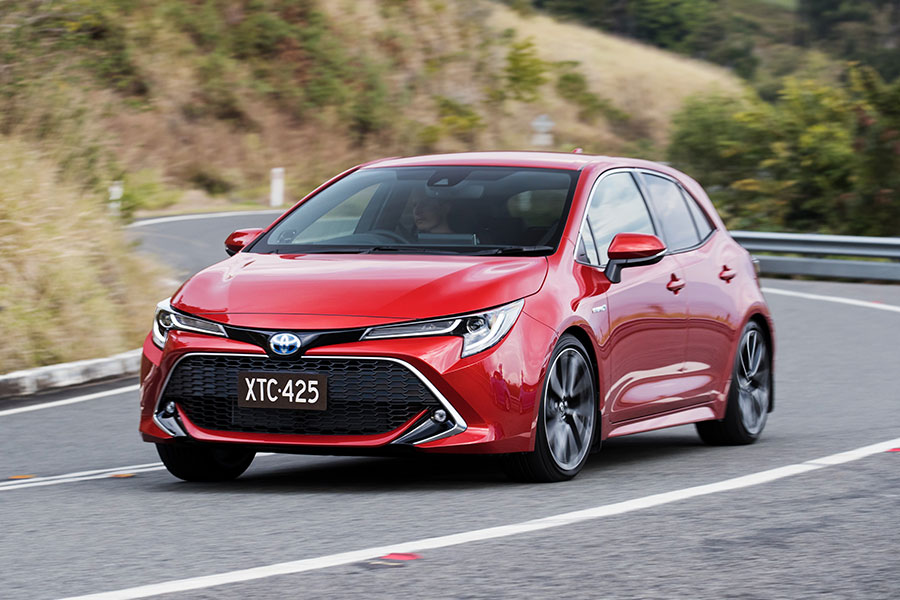The amalgamation of the finance arms will reduce overheads to save costs as the Japanese market continues to shrink and dealers seek to maximise returns. In Mazda’s case it will directly affect the bottom line by reducing its cost of raising capital.
SMM Auto was previously owned by Mazda and Ford and two huge financial groups, Sumitomo Mitsui and Cedyna. Sumitomo Mitsui was, in 2010, Mazda’s biggest shareholder.
Ford pulled out of the financier a decade ago and now Toyota will take the 51 per cent from the two finance companies, with Mazda holding 49 per cent.
It is the third major alliance move between the two car-makers this year and follows a cross-shareholding deal made in 2017.
Each company bought 50 billion yen ($A600 million) of stock in each other, equating to Toyota having a 5.5 per cent stake in Mazda and Mazda ending with a 0.25 per cent stake in Toyota, offset because of Toyota’s substantially bigger share issue.
The first venture between the pair this year has been a step-up in Mazda’s use of Toyota hybrid and EV technology.
Through Toyota’s expertise, Mazda has a mild hybrid version of the 2019 Mazda3 ready for launch. Mazda has made a regular hybrid version of the Mazda3 for the Japanese market since 2013.
In 2020 – Mazda’s 100th anniversary – the company plans to launch an EV that may include a rotary-engine generator to extend its battery range.
In 2017, Toyota and Mazda started a joint-venture company to provide technology for battery-electric vehicles after China stated it would prioritise EVs for its home market.

Toyota, which has a joint manufacturing venture with GAC Group in China, plans to produce 10,000 battery EVs a year and 110,000 plug-in hybrids a year.
Mazda makes the Mazda3, CX-3, CX-4, CX-5 and CX-8 in China for domestic consumption in a venture with Changan Automotive and has no home-grown EV program.
Changan has two EVs on sale in China and a joint venture with US-listed Chinese EV-maker Nio, which in turn is developing EVs with partner (and Toyota JV company) GAC. That is an indication of the web of technology sharing that benefits smaller car-makers such as Mazda.
The Chinese government aims to dramatically boost EVs and will remove foreign ownership requirements for companies making EVs and plug-in hybrids by 2022. This would allow Mazda and Toyota to have a standalone presence in China within four years by each producing vehicles with electrification.
In Thailand last month, Mazda gained approval by the Thai government to receive tax incentives for building proposed plug-in hybrid vehicles and EV components.
Companies including Toyota, Mitsubishi and Honda have already received incentives.
Mazda and Toyota are also partners in a new factory in Alabama that, from 2021, will make 300,000 vehicles a year.
Production will be split evenly between Toyota’s Corolla and an as-yet specified Mazda SUV, which could be the petrol-powered CX-8.
One of Mazda’s Mexican factories still makes the Yaris sedan for Toyota. It is based on the Mazda2 sedan and previously marketed for Toyota as the Scion sedan. It also makes the Mazda3 sedan and hatch for North American consumption out of Mexico.
Mazda has spent considerable funds on raising its technology bar.
The main recipient has been the extension of the SkyActiv program, with the second-generation platform – SkyActiv2 – just debuting in the 2019 Mazda3 and the launch of the innovative SkyActiv-X compression-ignition engine that could also be picked up by Toyota.
But it came at a cost. Mazda’s third quarter financial results showed the company had an operating loss of Y2.2 billion ($A27 million) compared with Y36.6 billion ($A440 million) profit in the previous corresponding period.
In addition to the R&D expense, the exchange rate went in the wrong direction and devastating June-July floods around Mazda’s Hiroshima base, that killed 200 people and crushed businesses, chopped 67,000 =vehicles off Mazda’s production quota.
Mazda will now consolidate the SkyActiv2 program by introducing it to the other models and make other major changes; including the next CX-3 in 2021, Mazda2 and MX-5 in 2022, CX-5 in 2022, fourth-generation Mazda6 (late 2019) and all-new BT-50 (made by Isuzu) in 2021.
By Neil Dowling















 Read More: Related articles
Read More: Related articles

